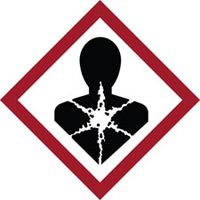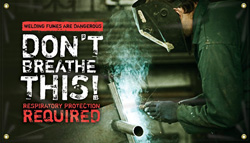| The Home page of ILPI's Safety Data Sheet (SDS) Resource, the leader in SDS information since 1995! | |
| The history and philosophy behind this resource. | |
| A curated collection of books and reference materials concerning Safety Data Sheets and closely related topics. | |
| Paste your plain text SDS into the SDS-Demystifier, and it will be converted into a hypertext-enriched document with links to detailed explanations of each key term. | |
| An extensive list of frequently asked questions about Safety Data Sheets including regulations, content, compliance, and more. | |
| A humorous take on Safety Data Sheet jargon. Fill in the blanks on our entry form to generate a personalized Unsafety Data Sheet to share with your coworkers. | |
| Since 1995, we've maintained this massive curated list of the best places to find Safety Data Sheets on the Internet. | |
| You are here! Way more than a glossary, this hypertext-enhanced resource covers hundreds of SDS-related terms and expert knowledge. Each entry includes both the SDS relevance and links to additional authoritative resources. | |
| Archived results of Safety Data Sheet related polls taken by some of our millions of site visitors | |
| The OSHA regulations behind SDS regulations, including the inspection guidelines and over 400 official interpretations letters under the Hazard Communication Standard | |
| Commercial suppliers of SDS authoring and management software as well as cloud compliance services. | |
| Commercial companies that will create SDS's for your specific needs as well as SDS translation companies. |

Safety signs, banners, and scoreboards? Get yours at Safety Emporium!
Definition

Get your GHS-compliant labels and signs from Safety Emporium.
A fume or fumes refers to vapors (gases), dusts and/or smoke given off by a substance as a result of a chemical transformation such as reaction, heating, explosion or detonation.
"Fumes" generally conveys the idea that the cloud is an irritating, hazardous and/or toxic substance.
The term applies particularly to very fine solid particles as a suspension in air. This closely matches the definition of dust, the main difference being that fumes are airborne whereas dusts need not be suspended in the air.
Additional Information
Fumes may contain both gases (vapors) and dusts. In many cases, the vapors are toxic or corrosive. For example, titanium tetrachloride (TiCl4) reacts immediately and violently with water vapor in the air to form dense white fumes. The chemical reaction that explains this behavior is:
TiCl4 + 2 H2O  TiO2(s) + 4 HCl(g)
TiO2(s) + 4 HCl(g)
The TiO2 (titania), is a solid that forms small white particles. The HCl (hydrogen chloride) is an invisible and hygroscopic gas that immediately condenses with water vapor in the air to form suspended liquid particles. The droplets in this HCl mist are acidic aqueous, solutions of hydrochloric acid.
Inhalation of these fumes is dangerous because each component is hazardous. The hydrochloric acid droplets can cause chemical burns to the respiratory system, eyes and skin; the fine particles of titania further irritate the damaged tissues.
SDS Relevance
"Fumes" can appear in multiple places/contexts on a Safety Data Sheet. For example, they might be mentioned in Section 9 (physical and chemical properties) as a physical property, e.g. "fuming liquid" or in Section 10 (stability and reactivity) with respect to incompatibility with other materials, or possible hazardous decomposition.
Fumes generally require more careful attention than simple dusts or vapors. For example, while a dust mask might be sufficient protection from some dusts, a dust mask will do nothing to protect you from titanium tetrachloride fumes which contain corrosive HCl. Likewise, an organic vapor respirator will not protect the user from fumes containing HCl.
Therefore, always try to control or eliminate the generation of fumes in the first place. Use appropriate ventilation such as fume hoods and other engineering controls. If the fumes are not adequately controlled with these methods, always use proper personal protective equipment (PPE) such as supplied air respirators.
Finally, note that many metal fumes, such as those generated in metal refining operations, soldering, and welding are significant health hazards. A general class of occupational disease is called metal fume fever. See the links below for more info.
Further Reading

Welding fumes are also a respiratory hazard. Remind your employees with safety banners from Safety Emporium.
- Metal Fume Fever, Safety and Health Fact Sheet No 25, by the American Welding Society.
- Welder's Guide to the Hazards of Welding Gases and Fumes from Work Safe Alberta.
- The U.S. OSHA publication Controlling Hazardous Fume and Gases during Welding.
- CCOHS has a very readable entry on Welding - Fumes and Gases.
- OSHA's Additional info about the Respiratory Protection Standard including overviews, requirements, an FAQ and more.
- Dust And Fume Control In The Rubber Industry at the Health & Safety Executive (a United Kingdom government agency).
- Irritant Gas Inhalation Injury at the Merck Manual professional version.
- Local exhaust ventilation - quick guide at Work Safe New Zealand.